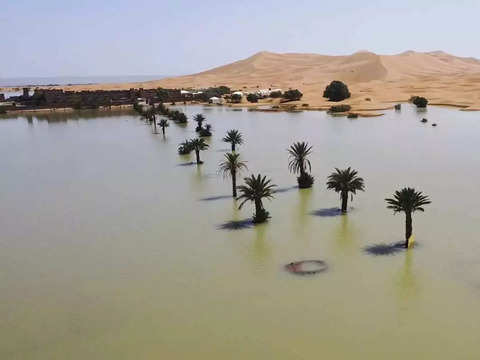
Striking images have emerged from the Sahara Desert, showcasing large lakes that have formed amid the sand dunes after an unprecedented flood hit one of the driest regions in the world. While the Sahara experiences minimal rain each year, a rare downpour in southeast Morocco in September transformed the landscape.
Triggered by a low-pressure system, nearly 8 inches of rain fell over two days, with Errachidia, a desert city, recording almost 3 inches—four times its typical monthly rainfall. Houssine Youabeb from Morocco’s meteorology agency noted that this is the most rain the region has seen in 30 to 50 years.
In Merzouga, a desert town, the deluge created new lakes, turning the sandy terrain into a watery expanse. The normally dry lakes, such as those in Iriqui National Park, filled with water, as seen in NASA satellite images. The rain, while awe-inspiring, also caused deadly flooding, claiming more than a dozen lives.
The event is part of a broader climate shift, with studies suggesting that human-induced climate change may be contributing to more extreme rainfall in the Sahara, signaling possible future changes to the desert’s ecosystem.
 GhArticles.com Every News in Detail
GhArticles.com Every News in Detail



